- News
- Reviews
- Bikes
- Components
- Bar tape & grips
- Bottom brackets
- Brake & gear cables
- Brake & STI levers
- Brake pads & spares
- Brakes
- Cassettes & freewheels
- Chains
- Chainsets & chainrings
- Derailleurs - front
- Derailleurs - rear
- Forks
- Gear levers & shifters
- Groupsets
- Handlebars & extensions
- Headsets
- Hubs
- Inner tubes
- Pedals
- Quick releases & skewers
- Saddles
- Seatposts
- Stems
- Wheels
- Tyres
- Tubeless valves
- Accessories
- Accessories - misc
- Computer mounts
- Bags
- Bar ends
- Bike bags & cases
- Bottle cages
- Bottles
- Cameras
- Car racks
- Child seats
- Computers
- Glasses
- GPS units
- Helmets
- Lights - front
- Lights - rear
- Lights - sets
- Locks
- Mirrors
- Mudguards
- Racks
- Pumps & CO2 inflators
- Puncture kits
- Reflectives
- Smart watches
- Stands and racks
- Trailers
- Clothing
- Health, fitness and nutrition
- Tools and workshop
- Miscellaneous
- Buyers Guides
- Features
- Forum
- Recommends
- Podcast
feature
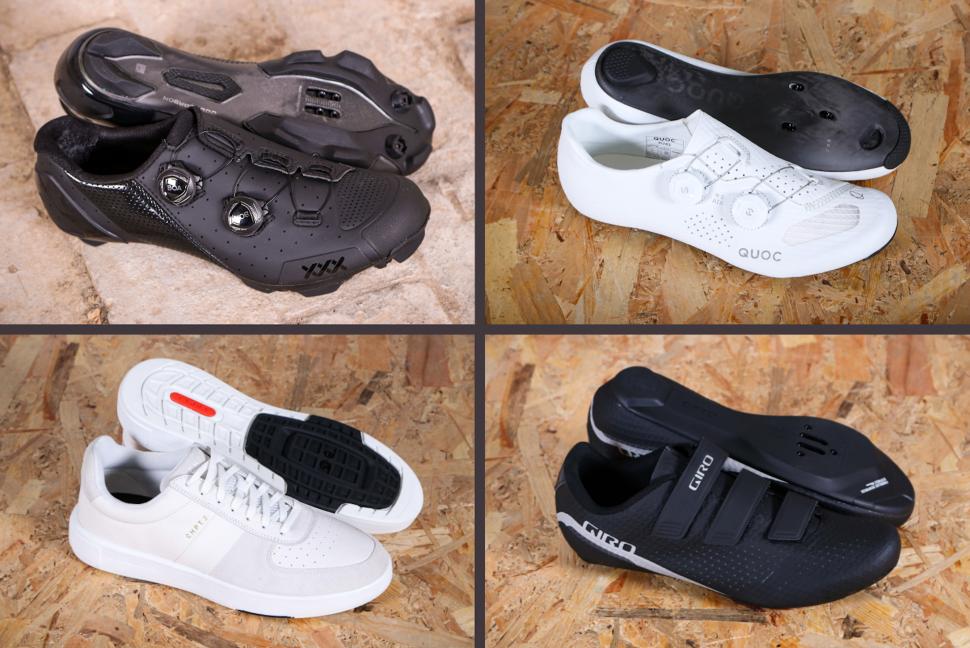 Everything you need to know about bike shoes
Everything you need to know about bike shoesEverything you need to know about cycling shoes — from materials and sole stiffness to closure systems and cleat compatibility, make the right choice when selecting your bike shoes
Cycling shoes are far more than just a style element, providing the crucial contact point with your pedal system whether that's a flat or clipless pedal. If you're just starting out on your cycling journey or are considering upgrading your bike shoes, it can be difficult to know which genre is right and where your money is best spent – so we've put together this catch-all guide to help out new and experienced cyclists alike.
You can cycle in casual footwear of course, but dedicated cycling shoes will be more efficient, more comfortable and just better all round if you’re riding any significant distance. These shoes are designed to be lightweight and stiff for optimal power transfer while pedalling, often featuring mesh panels for breathability in warmer weather.
Cycling shoes are generally split into two main categories nowadays: 'clipless' (or clip-in) shoes, and flat-pedal shoes. You might find old-school toe clips and straps on vintage bikes (which is why the term 'clipless' exists to distinguish them, even though you do clip in to clipless pedals), but clipless has all but made them extinct.
Clipless shoes clip directly into your pedals, and there are various types for different riding styles such as road cycling, mountain biking and indoor cycling. Flat-pedal shoes have flat soles which blend off-bike convenience and comfort with excellent on-bike performance with cycling specific features.
> Everything you need to know about bike pedals
Each type of cycling shoe has its pros and cons, with lots of things to consider, such as the sole material, closure system, sizing and width, based on your riding preferences and style. When choosing your cycling shoes, the first thing to think about is the type of riding you'll be doing. This will help you select the appropriate shoe type, closure system, sole stiffness, and cleat compatibility.
We'll cover everything you need to know about the different types of shoes, feature, and whether more expensive cycling shoes are worth it.
Road cycling shoes
The first type of cycling shoes you’ll likely encounter are road cycling shoes, which are designed to be used with clipless pedals. The soles typically have three threaded holes to accept cleats from Shimano, Look, and Time, or a four-bolt drilling that’s compatible with Wahoo's Speedplay pedal system (adapters are supplied with the latter so they still work with three-bolt shoes).
There are several different road clipless pedal systems, and the pedals and cleats aren’t interchangeable. In other words, you need to use Look Kéo cleats with Look Kéo pedals, and so on.
Road cycling shoes come with stiff nylon, composite or carbon-fibre soles with no rubber outsole over the top, so the cleats sits externally. They are designed for efficiency, getting the maximum amount of your power through to the pedals to propel you forward.
These cycling shoes aren’t designed for walking far. The large external cleat, in combination with the stiff sole, means you tend to hobble rather than walk. You’ll manage to get from your house to the garage to collect your bike, and you’ll be able to nip into a café for a mid-ride coffee, but that’s about the extent of it. You don’t want to get stranded with a puncture and have to push your bike home with these on your feet.
It's worth noting that just because you ride on the road, you don't necessarily need road cycling shoes. If you would prefer to be able to wear your cycling shoes off the bike too - at the office, for example, or to the shops - cycling shoes with cleats that are recessed into the soles will be more suitable. More on this below.
Mountain bike shoes
There are two types of mountain bike shoes - flat pedal or clipless shoes - and we are going to be talking about clipless cycling shoes first. Like road cycling shoes, clipless mountain bike shoes will physically attach your feet to the pedals which can help to improve security when descending and pedalling efficiency.
Mountain bike clipless shoes have a recessed two-bolt cleat design, meaning the cleat is sunk into the shoe’s outsole so that it doesn’t touch the ground when you’re off the bike. This makes them easier to walk around in than road cycling shoes where the cleat protrudes from the sole of the shoe.
The soles of mountain bike shoes tend to be more flexible than road cycling shoes and can have aggressive tread and sometimes studs to provide grip when you're walking or running through mud.
Some mountain bike shoes designed primarily for racing do have very stiff carbon soles. In this case, efficient power transfer is a more important consideration than comfortable walking.
Some brands now even offer two-bolt cleat shoes that look like casual trainers, for example the Adidas Velosamba COLD.RDY Cycling Shoes and CHPT3 Transit Cycling Shoe.
There’s no reason why you can’t use mountain bike cycling shoes with the relevant pedals on a road bike. You’ll see a lot of city cyclists using them because the sole makes them a lot more practical when they get off the bike.
Flat-pedal shoes
As mentioned above, flat pedal shoes are also used by off-road riders and are usually the choice for downhill or enduro mountain biking. Flat-pedal cycling shoes aren't just for off-road riders though, and they can make cycling life easier for commuters, urban pedallers and leisure riders too.
There are a few reasons why you might decide you’d rather use flat shoes instead of cleated cycling shoes. The most obvious is that you either don’t like the idea of clipping in and out, or you find the whole cleated shoe and clipless pedal business a bit of a faff. If you’re hopping on and off your bike all day, especially in an urban environment, that’s a perfectly valid point of view.
They often utilise sticky rubber soles that have a clever tread design which can offer excellent grip on and off the bike. The soles are also stiffer than standard trainers but the stiffness will vary across different types of flat-pedal shoes depending on their intended use.
You'll need to decide how much non-cycling time you'll be spending in your shoes - stiffer flat-pedal shoes are great for power transfer but might not be comfortable for day-to-day life. However, some flat-pedal shoes absolutely could become your daily shoes.
Winter boots
The ventilation that’s such a welcome feature of cycling shoes in the summer can just lead to cold feet in the winter, so most cyclists resort to overshoes when the temperature drops. Overshoes also protect your shoes from rain and mud.
> How to increase your cycling motivation in winter
Winter boots are another option. As you’d expect, these are cycle-specific boots designed to keep your feet warm and dry – or at least drier than they’d otherwise be.
Some winter boots are designed for three-bolt (road-style) cleats, and others are designed for two-bolt (mountain bike-style) cleats.
Indoor cycling shoes
Road cycling shoes are suitable for indoor cycling, but there are also indoor-specific cycling shoes designed with extra ventilation to keep you cool and sweat-free.
Key features to consider
Cleat system and compatibility
The cleat system of your cycling shoes will determine the compatibility with specific pedal types as cleats and pedals are not interchangable. We would suggest choosing your pedal type based on the type of riding you'll be doing and then ensuring your shoes are compatible with your pedals.
There are two main cleat systems: two-bolt and three-bolt. Mountain bike shoes generally use two-bolt systems while road cycling shoes typically use three-bolt systems. You can look at the sole of the shoe to confirm it has the correct mounting holes (either two or three). Some shoes may also feature both two-bolt and three-bolt options, allowing you to choose either system.
For mixed-terrain rides or commuting, two-bolt shoes will offer better walkability, while three-bolt shoes are better for efficient road cycling performance.
For two-bolt cycling shoes, the cleat attaches to the shoe with two bolts, making the cleat smaller and generally, recesses into the sole of the shoe. Shimano SPD is the primary two-bolt system, but other popular options include Look, Crank Brothers and Time.
The three-bolt system attaches to the shoe with three bolts, forming a triangular shape which creates a larger surface area, allowing for better power transfer. Popular options here are Look, Shimano, Time and Wahoo Speedplay.
Sole material and stiffness
The material and stiffness of the sole of a cycling shoe are key factors that influence how much power your transfer when pedalling and impacts comfort when walking.
Road cycling shoes typically have the stiffest soles, often made from nylon, composite, or carbon fibre. Although this design limits walkability, the performance benefits for road cycling make it a worthwhile trade-off for many riders.
Mountain bike shoes tend to be more flexible and made from nylon or rubber to balance stiffness and flexibility, and have a tread for grip when walking.
Flat-pedal shoes generally have the least stiff soles, made from flexible rubber or nylon to offer good grip on the pedals and comfortable walkability. Flexible soles don’t transfer as much power to the pedals, so they’re less efficient for long rides but are a great choice for low-intensity rides and short commutes.
Closure systems
For all types of cycling shoes, manufacturers use various systems to secure them to your feet: Velcro straps, ratchet buckles, laces and wire dials, such as those from Boa.
Velcro straps are simple and affordable, making them a good choice for entry-level or casual riders. They are easy to use and can be adjusted quickly, but they don't allow for micro-adjustments and don't provide the same level of security as Boa or ratchet systems.
Ratchet buckles use a lever and strap system to tighten the shoe which can offer a strong and adjustable hold. It allows for incremental adjustments and can be adjusted on the fly. However, ratchet buckles tend to be heavier and bulkier than other systems.
Lace-up cycling shoes have become popular again and they make it easy to fine-tune the tension over the top of your foot, at the expense of a bit more faff putting them on in the first place.
Wire dials that pull a thin steel wire to snug your shoes round your feet are extremely popular and often seen on higher-end cycling shoes. They allow you to make micro-adjustments and the cable system evenly distributes pressure across your foot. They are simple to use and are lightweight and low profile, but are more expensive than simpler closure systems.
Upper materials
Uppers can be leather or synthetic. They’re usually designed to be lightweight, and often feature mesh panels. Sweaty feet can be uncomfortable, especially on a long ride, and these panels are designed to avoid that.
Choosing the right fit
> The most common bike fit mistakes and how to avoid them
Getting a comfortable shoe is absolutely essentially so it’s worth heading to a well-stocked bike shop to try on several pairs of different cycling shoes before you buy. Remember to wear the same socks that you’re likely to wear on the bike. As with non-cycling shoes, sizing varies between brands. It's worth using a tape measure to find the length and width of your foot as you can then match up your dimensions to a size chart specific to each brand.
Some brands, such as Shimano, cater for different foot widths with a ‘wide’ version of their shoes, while shoes from Sidi, for example, tend to suit narrower feet. Choosing a shape that suits the width of your foot is important for avoiding pressure points and to accommodate foot swelling, especially on longer rides.
The last few years have seen the development of heat mouldable shoes. The likes of Lake, Shimano and Bont produce shoes that you can heat up in an oven and then mould to your feet, offering a degree of customisation to improve comfort and efficiency.
Insoles
Insoles play a significant role in the comfort, support, and performance of cycling shoes. While most cycling shoes come with basic insoles, if you need to fine-tune the fit of your shoes, you can get aftermarket insoles too.
Proper insoles can help to distribute pressure evenly, reduce hotspots and support your arches.
What more do you get when you pay extra?
The more you spend, the lighter your cycling shoes are likely to be. The weight difference can be 350g or more between entry-level shoes and the most expensive.
Shoe brands will tailor the material to suit the price and desired application of the shoe use. Carbon fibre for the most expensive race slippers and nylon or plastic for the more affordable options, which offer an increase in weight.
Stiffness is important for efficiently transferring your power to the pedals. If you’re racing, you’ll want a stiff cycling shoe, but if you’re not racing you might want to choose a shoe with more flexibility.
Cheaper cycling shoes tend to have simple Velcro straps, but if you pay more you’ll often get a different closure system. From micro-ratcheting buckles to rotary dials to a combination of buckles, ratchets and Velcro, every brand has their favoured approach for holding the shoe in place securely.
Higher end cycling shoes tend to have uppers made from materials that are lighter, more breathable and more supple than you’ll find at the entry level. This can have a big impact on a cycling shoe’s comfort.
So, are more expensive cycling shoes worth it? That will depend on what kind of riding you do. Premium cycling shoes can offer advantages in terms of performance, stiffness, comfort and weight, but for casual riders, mid-range options can still offer a great fit and reliable performance.
Hopefully this mini-guide has been useful if you're looking for a new pair of cycling shoes! You can check out all the cycling shoes we've reviewed on road.cc for more recommendations.
Emily is our track and road racing specialist, having represented Great Britain at the World and European Track Championships. With a National Title up her sleeve, Emily has just completed her Master’s in Sports Psychology at Loughborough University where she raced for Elite Development Team, Loughborough Lightning.
Emily is our go-to for all things training and when not riding or racing bikes, you can find her online shopping or booking flights…the rest of the office is now considering painting their nails to see if that’s the secret to going fast…
Latest Comments
- Miller 1 hour 43 min ago
I'm reading this as the komoot founder cashing out? Tough on the staff who'll get a redundancy notice and not a payout.
- Rendel Harris 2 hours 9 min ago
You can pick them up for £129 at Cyclestore now with free postage.
- belugabob 2 hours 21 min ago
Is that in the same way as roads encourage speeding?
- Jakrayan 2 hours 22 min ago
A tandem might work if it was specially made so that she was at the front. Realistically, I'd probably enjoy staring at her bum more than she would...
- David9694 4 hours 40 min ago
I certainly don't put every story about every fatal crash I encounter, this pair just got me curious, like why are 90 year olds still driving and...
- Vo2Maxi 5 hours 13 min ago
Over 25 years ago now, I was on the Ideal Travel winter training camp in Majorca....
- chaos 5 hours 22 min ago
Great news for titanium and steel owners like me. My metal rim bikes roll on. Sadly, my venture into carbon territory is a different story. Anyway,...
- Sredlums 6 hours 4 min ago
I honestly can not yet get my head around how this thing is supposed to work. What I do know is that it does not have the chain on each side,...
- Bmblbzzz 6 hours 45 min ago
And it's worth remembering it's not just Park St – it's from Vic Rooms down to College Green. https://www.bristol247.com/news-and-features/news...
- David9694 8 hours 32 min ago
Driver taken to hospital after flipped car shut road near Barnstaple...
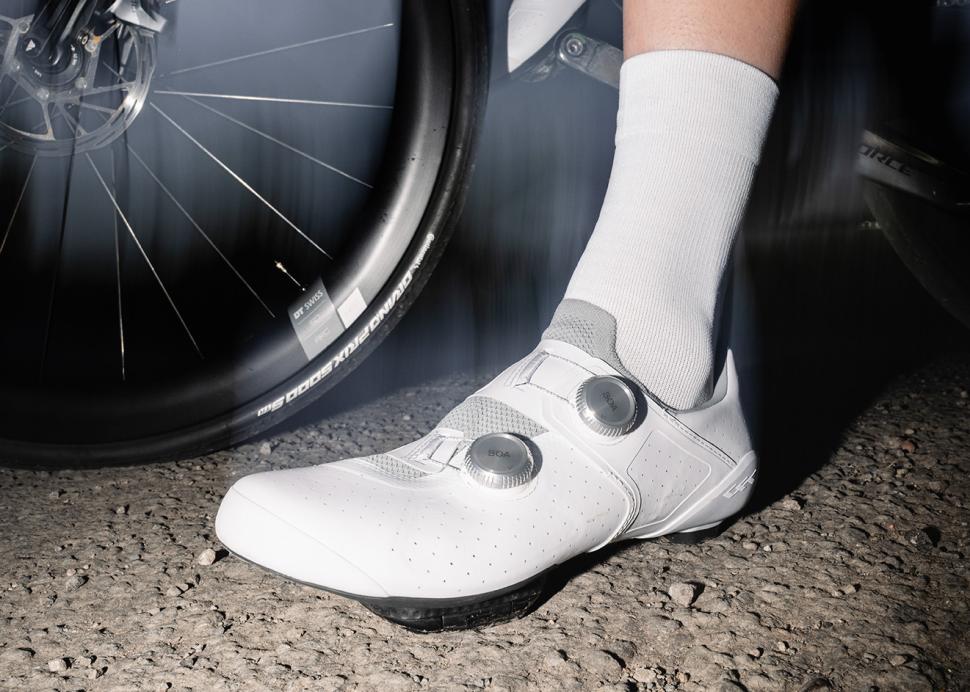
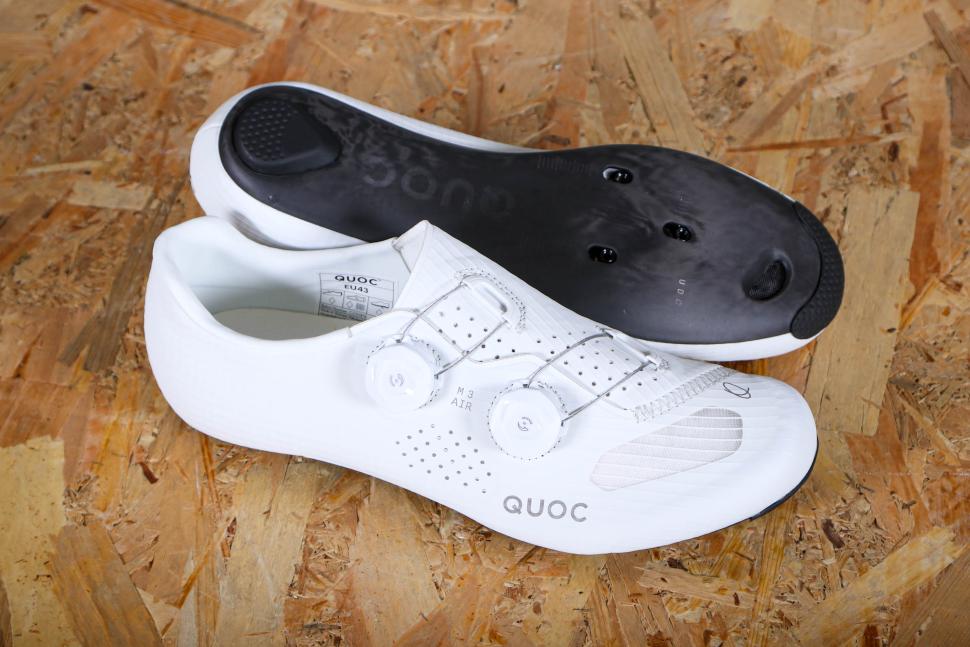

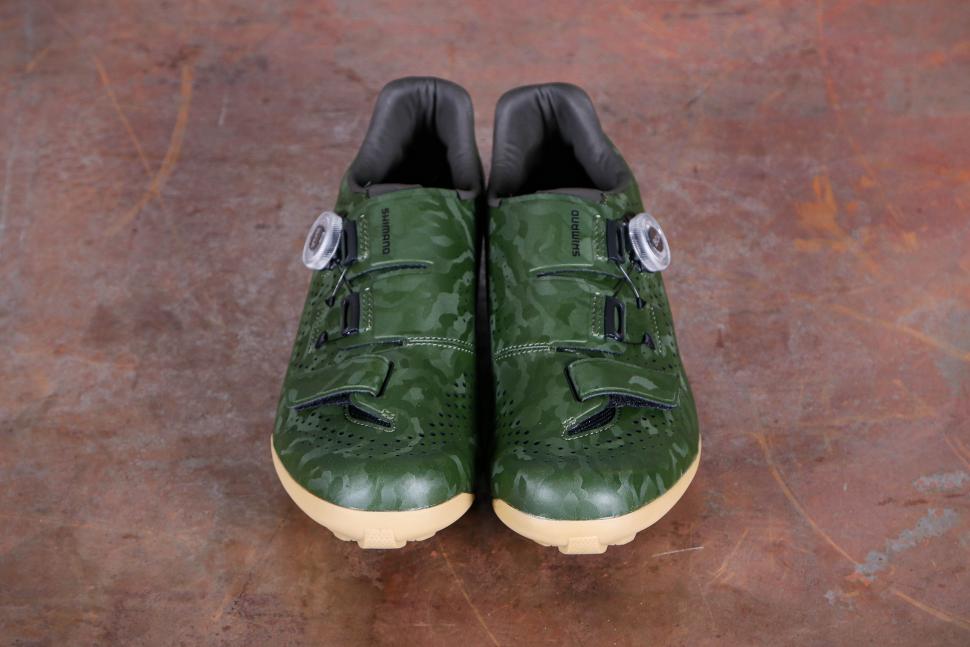

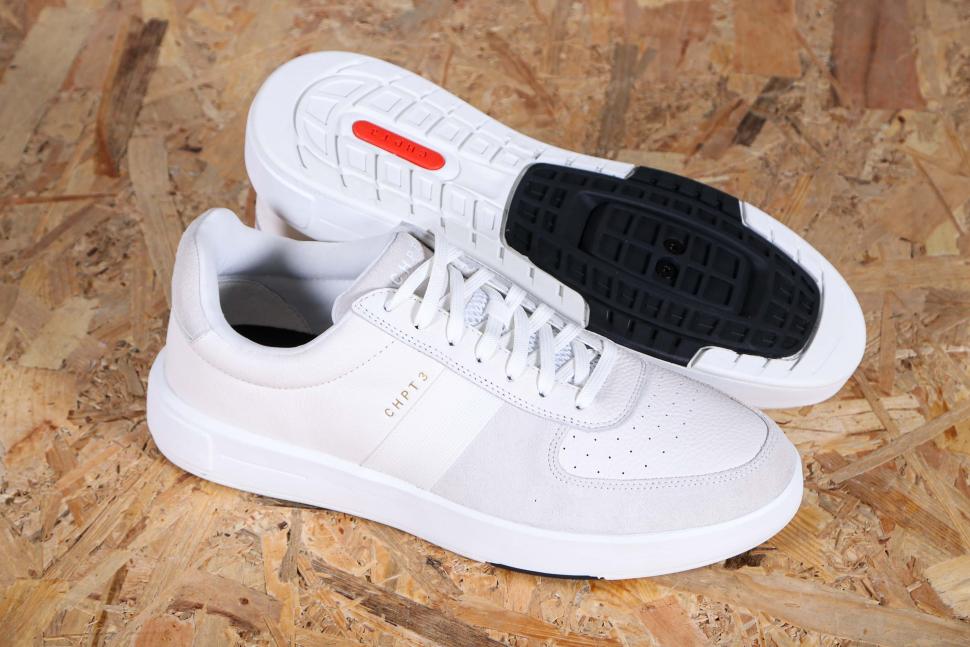


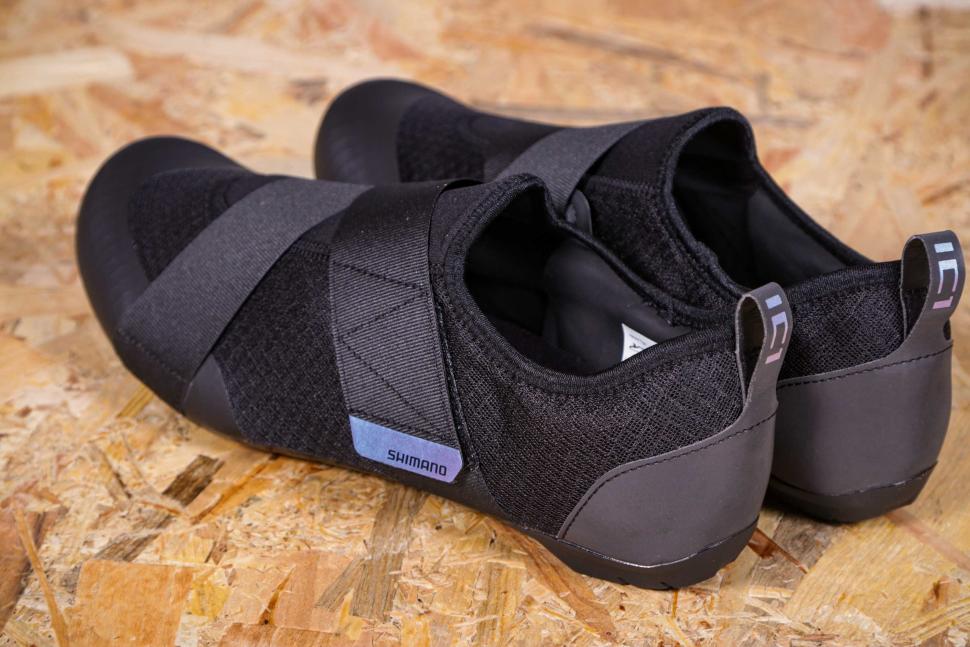
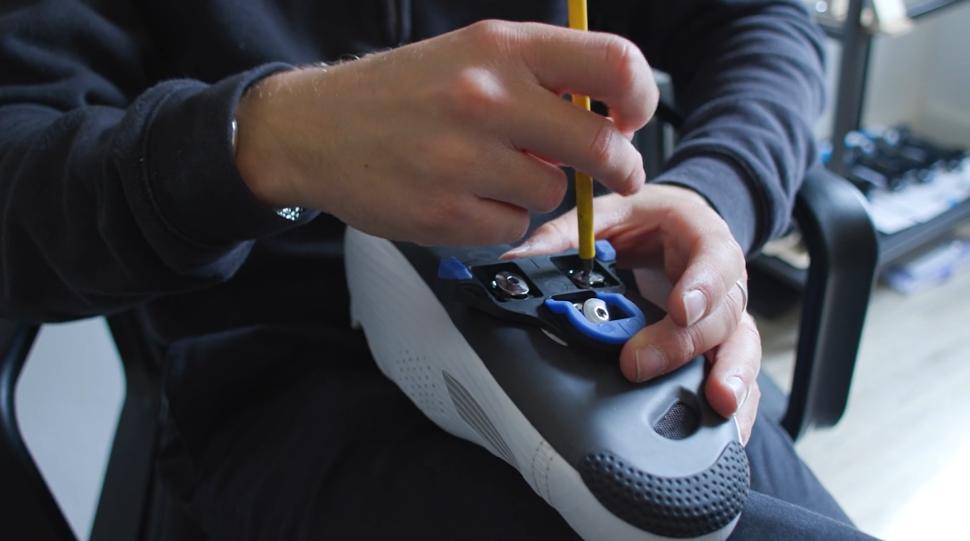

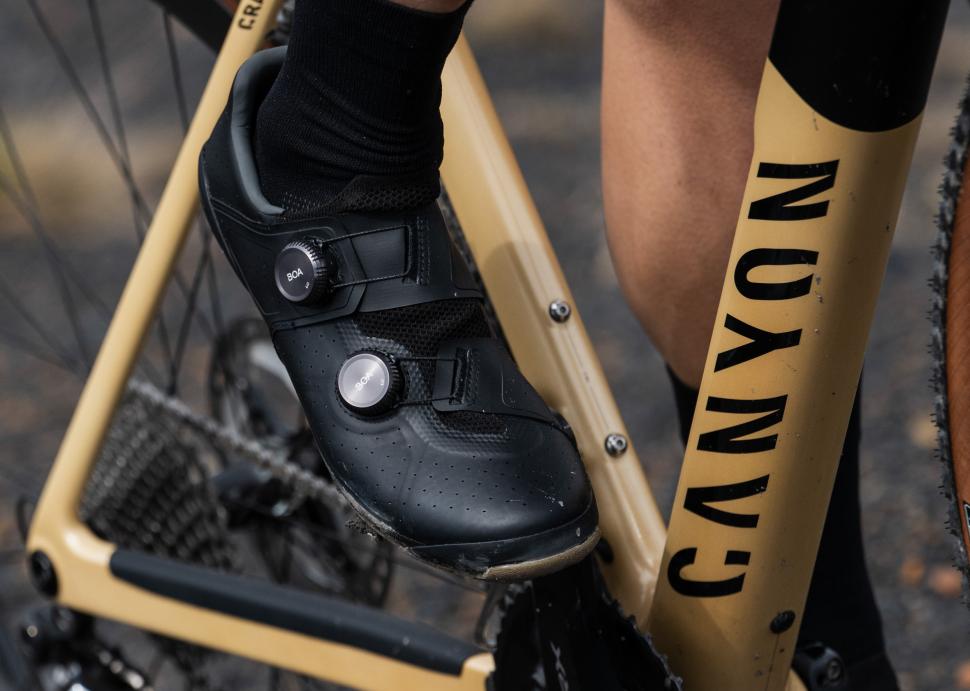




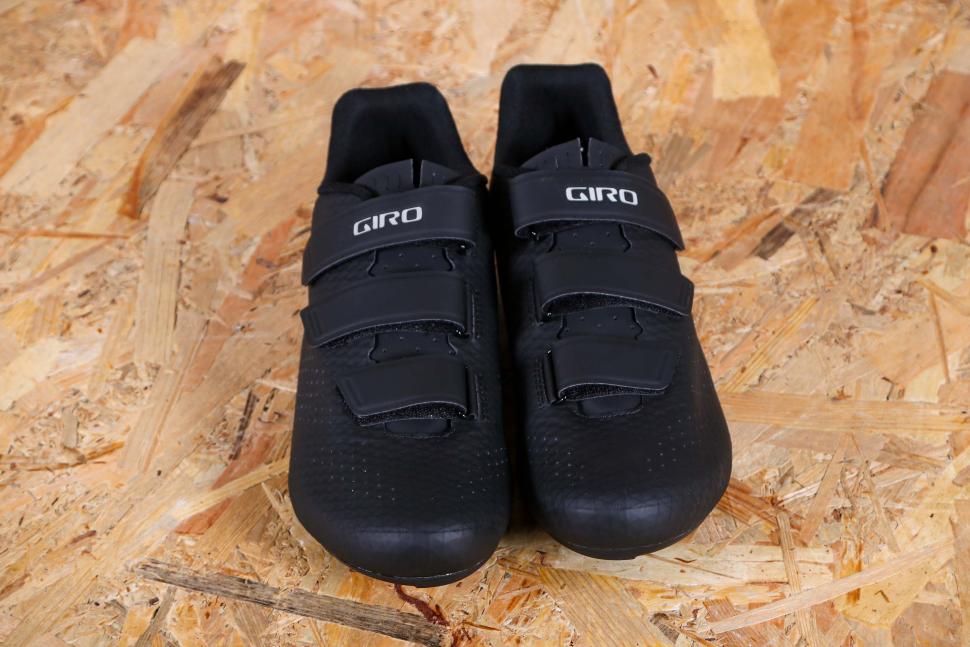
Add new comment
2 comments
There is a modest scientific literature on cycling shoes. It is generally sceptical about the value of greater stiffness provided by say carbon soles and even about attachment systems. These might matter in sprints but otherwise no, or at least not so much that the admittedly small samples detect a benefit. Very stiff shoes may even injure you.
https://scholar.google.com/scholar?hl=en&as_sdt=0%2C5&q=cycling+shoe+sti...
This is great news for anyone thinking to buy cycling shoes: you can go ahead and pick the ones that fit and you think look good. My slingback pumps are splendid.
Regarding fit, from my experience shoes seem to follow the same nonsense in sizing as a "race" cut clothing - I generally have to upsize one or two sizes which obviously leads to overlap. Width is critical also - even supposedly wider fit shoes are quite narrow. While your advise about going to a shop with a good selection to try is a good one, not all of us have a huge choice locally, so if a list of brands that cater for wider feet could be added, it would be useful in looking for shops that carry them.